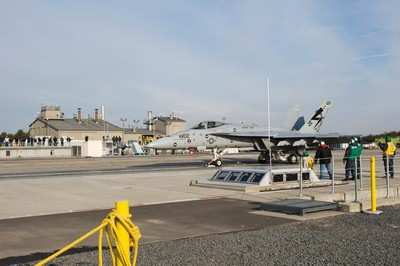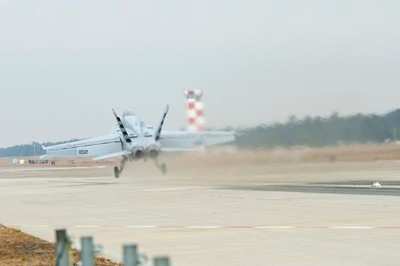Electromagnetic Launch System Will Replace Steam Catapults On
Aircraft Carriers
The Navy has been using steam for more than 50 years to launch
aircraft from carriers. Saturday, the Aircraft Launch and Recovery
Equipment (ALRE) program launched an F/A-18E Super Hornet using an
Electromagnetic Aircraft Launch System, or EMALS technology that
will eventually replace steam catapults on future aircraft
carriers. The test was conducted at the Naval Air Systems Command
facility in Lakehurst, NJ.

“This is a tremendous achievement not just for the ALRE
team, but for the entire Navy,” said Capt. James Donnelly,
ALRE program manager. “Saturday’s EMALS launch
demonstrates an evolution in carrier flight deck operations using
advanced computer control, system monitoring and automation for
tomorrow’s carrier air wings.”
EMALS is a complete carrier-based launch system designed for
Gerald R. Ford (CVN 78) and future Ford-class carriers. “I
thought the launch went great,” said Lt. Daniel Radocaj, the
test pilot from Air Test and Evaluation Squadron 23 (VX-23) who
made the first EMALS manned launch. “I got excited once I was
on the catapult but I went through the same procedures as on a
steam catapult. The catapult stroke felt similar to a steam
catapult and EMALS met all of the expectations I had.”

The current aircraft launch system for Navy aircraft carriers is
the steam catapult. Newer, heavier and faster aircraft will result
in launch energy requirements approaching the limits of the steam
catapult system. The mission and function of EMALS remain the same
as the steam catapult; however, EMALS employs entirely different
technologies. EMALS will deliver the necessary higher launch energy
capacity as well as substantial improvements in system weight,
maintenance, increased efficiency, and more accurate end-speed
control.
“I felt honored to be chosen as the Shooter to help launch
the first live aircraft tested on the new EMALS track at
Lakehurst,” said Chief Petty Officer Brandon Barr, Naval Air
Warfare Center Aircraft Division Test Department, Lakehurst.
“It was very exciting to knowingly be a part of naval
aviation history. Petty Officers 1st Class Hunsaker and Robinson,
Petty Officers 2nd Class Williams, Wong, and Simmons, were the
sailors on my team who worked together to help make this test a
success. We all look forward to seeing this cutting edge technology
deployed on the Gerald R. Ford."

“I’m excited about the improvement EMALS will bring
to the fleet from a capability and reliability perspective,”
said Cmdr. Russ McCormack, ALRE, PMA-251, deputy program manager
for future systems. “EMALS was designed for just that
purpose, and the team is delivering that requirement.” The
system’s technology allows for a smooth acceleration at both
high and low speeds, increasing the carrier’s ability to
launch aircraft in support of the warfighter.
The system will provide the capability for launching all current
and future carrier air wing platforms – lightweight unmanned
to heavy strike fighters. Engineers will continue system
functional demonstration testing at NAVAIR Lakehurst. The team will
expand aircraft launches with the addition of T-45 and C-2 aircraft
next year.
 ANN's Daily Aero-Linx (05.02.24)
ANN's Daily Aero-Linx (05.02.24) ANN's Daily Aero-Term (05.02.24): Touchdown Zone Lighting
ANN's Daily Aero-Term (05.02.24): Touchdown Zone Lighting Aero-News: Quote of the Day (05.02.24)
Aero-News: Quote of the Day (05.02.24) ANN FAQ: Contributing To Aero-TV
ANN FAQ: Contributing To Aero-TV NTSB Final Report: Cirrus Design Corp SR20
NTSB Final Report: Cirrus Design Corp SR20




